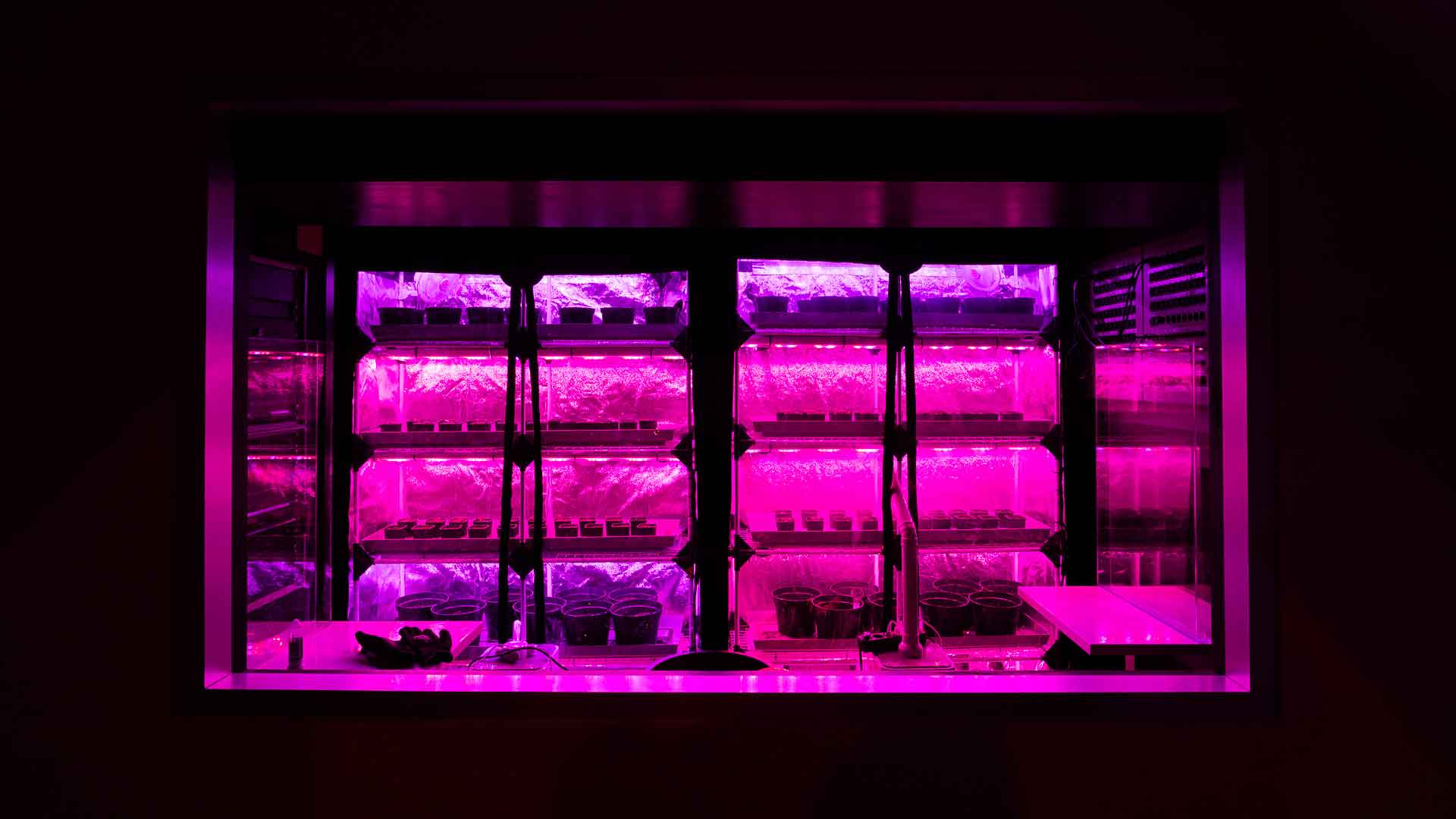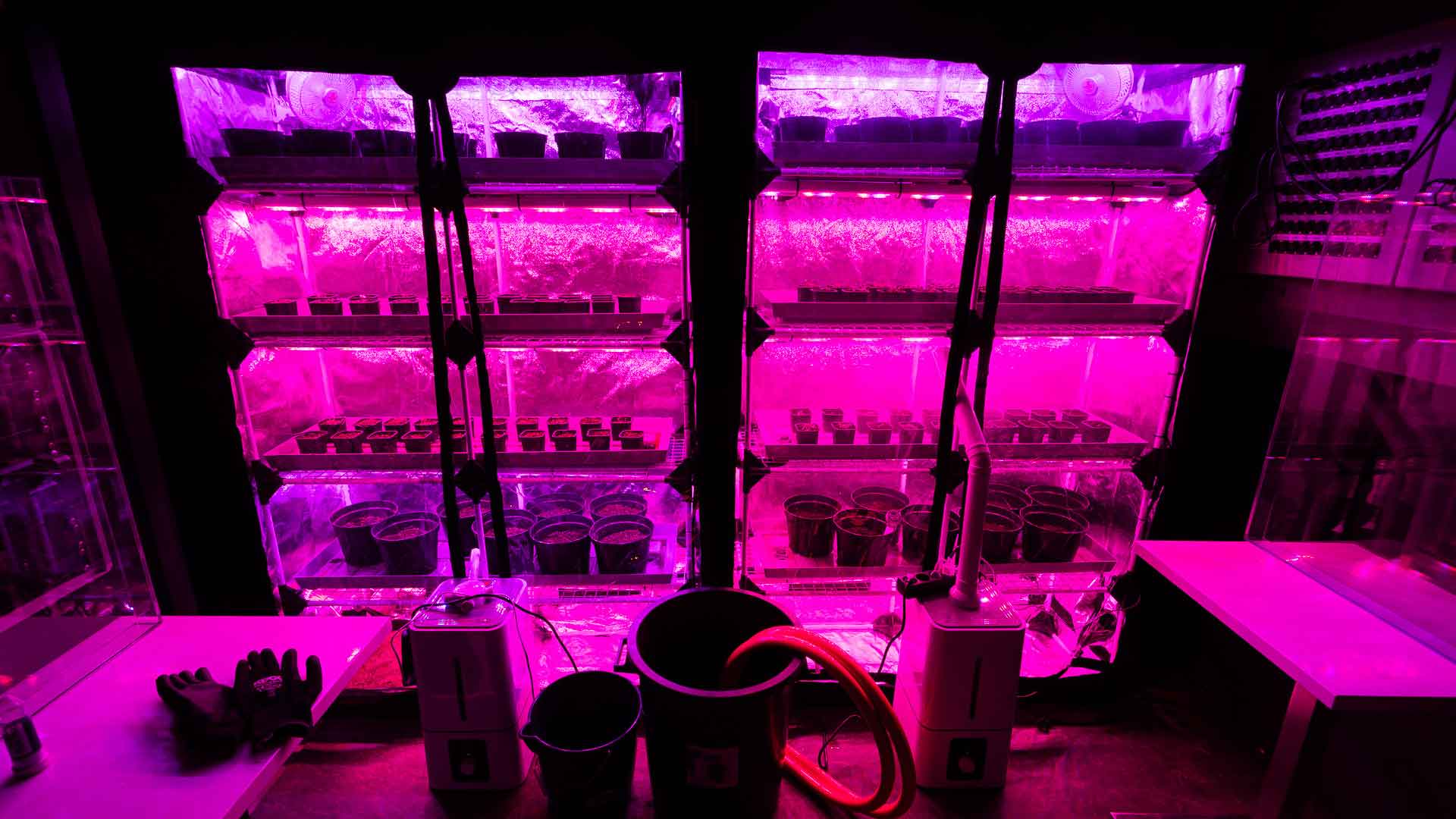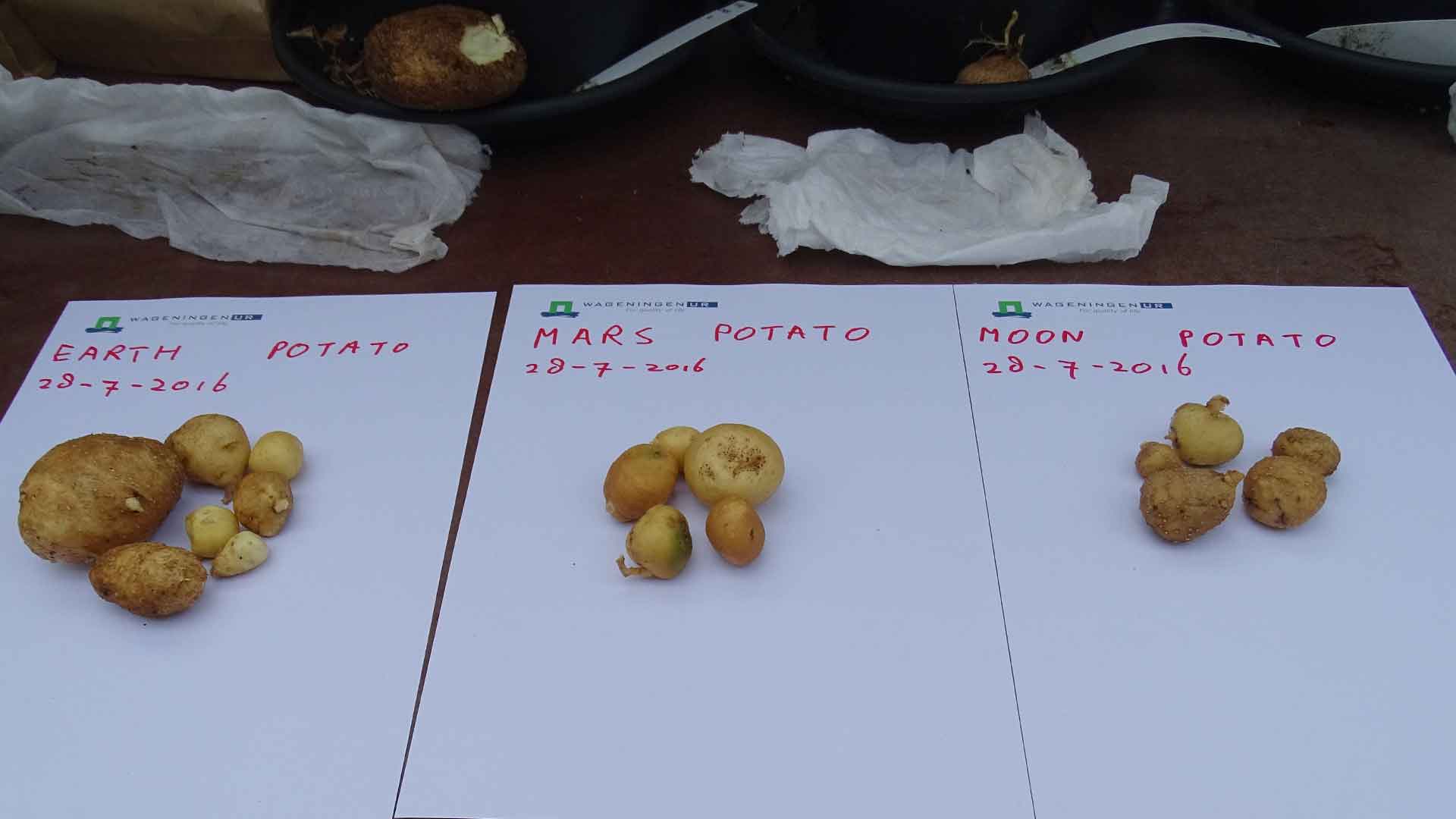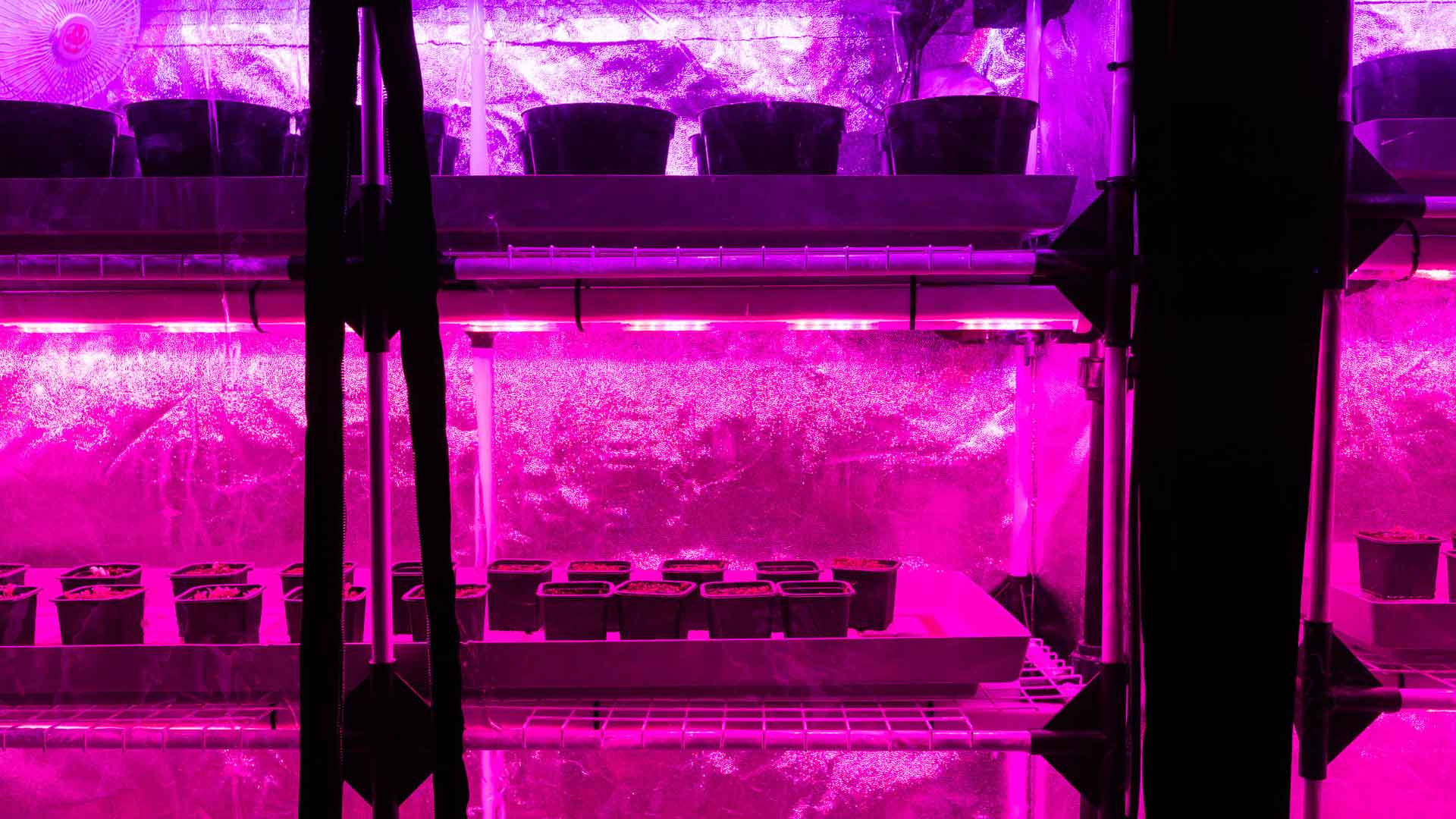
It might sound like the title of a bad horror movie. But cultivating potatoes in space may soon be more than just fiction. Scientists and biologists are currently using simulated Mars and moon soil to experiment with space farming. One of them is space farmer Wieger Wamelink.
Wieger Wamelink is a space biologist from Wageningen University who explores crop cultivation using simulated Mars and lunar soil from NASA. He is currently demonstrating the cultivation of his space potatoes in a Mars soil replica at the Evoluon in Eindhoven. Next Nature's Ruben Baart asked the space farmer to share his know-how about the future of humans and food in space.
Ruben Baart: Was it always your dream to become a space farmer?
Wieger Wamelink: It wasn’t, no, in fact I wanted to be an astronomer when I was little. I read every book on astronomy I could find, even when I got older. However, I did look after my own vegetable garden, so the seed must have already been hidden somewhere.
I wanted to be an astronomer when I was little. I read every book on astronomy I could find, even when I got older.
RB: Can we live on Mars?
WW: There’s almost no air on Mars and the average temperature is around -60 ºC. Any people there would always have to wear a space suit if they went outside, but obviously they could also live inside. In fact, they would have to, because Mars has barely any atmosphere and no electromagnetic field, so there’s no protection against cosmic rays. For protection, people would have to live underground.
RB: Does that also apply to plants?
WW: What applies to humans also applies to plants. Plants cannot survive without air, or in such cold conditions, so on Mars plants would have to be grown indoors in a special cultivation chamber with LED lighting.

Photo: Wageningen University
RB: Would you use the local Martian soil?
WW: Well, there’s plenty of soil there, but it contains virtually no nitrates or ammonia, so plants can’t grow in it. Fortunately, we can do something about that.
RB: What exactly?
WW: You can create a ‘living’ soil by mixing it with organic matter, such as plant debris, to generate nutrients. The plant remnants also help retain water better, so that it doesn’t immediately evaporate. Human feces is also useful, because it’s organic fertilizer that helps plants grow better. Human urine contains many essential nutrients for plants. Feces are different, because they contain dangerous bacteria that can infect people. We must therefore carry out detailed research on how to kill these bacteria first, but in the end it's just fertilizer generated by humans.
You can create a ‘living’ soil by mixing it with organic matter, such as plant debris, to generate nutrients.
RB: Besides people, you also want to send worms to Mars. Why?
WW: Worms are very useful animals. They burrow through soil creating tunnels, which makes it easier for water to flow through and supply the soil with oxygen. Worms also help break down plant remnants by partially eating and excreting them in the form of manure. Any mission to Mars definitely needs to take worms on board.
RB: Can we eat these worms too?
WW: You can eat earthworms, but nobody does. It could be an additional source of protein.
RB: Exactly. A more varied space diet.
WW: In that case, we’d be better off eating mealworms. Mealworms are the larvae of beetles that could eat our waste. We could then eat them in turn. That’s already happening on Earth: mealworm bars are now available in shops.

Photo: Tom Doms
RB: Will other insects also be needed on Mars?
WW: We need pollinators: bees and bumblebees will also have to go to Mars. They can survive well in greenhouses. The queen could be transported in hibernation, which is something we already have experience with. People often forget that flies are also perfectly capable of fertilizing plants.
RB: Would we also be able to keep livestock on Mars?
WW: In principle yes, but that would require a lot of food and space. Animals are very inefficient at converting what they eat into meat and other products. The manure would be useful for fertilizing the soil, but for the time being there are no plans to take animals to Mars. We don't yet know how to transport a chicken or a cow in a spaceship.
Any mission to Mars definitely needs to take worms on board.
RB: Which plants would thrive on Mars?
WW: We’ve developed a good understanding of how the soil works, and up until now everything we’ve planted has been successful. We started with wild plant species such as nettles, because they can withstand extreme conditions better, and they flourished. Quinoa, chives, carrots, radishes and potatoes all do well. The only problem we had was with spinach, but that was because of the day length on Mars. Too much light causes the spinach to flower too quickly, which is undesirable: we need the leaves, the edible parts. Peanuts also do well, and are important for oil.

Photo: Wageningen University
RB: Would it be safe to eat plants grown on Mars?
WW: We can't be completely sure because we won't know until we get there and conduct experiments. We're using special simulated soils that are similar, and our results up to now show the plants which grow in it are safe to eat. Heavy metals exist in Martian soil, but that’s also the case on Earth. You do ingest some of these heavy metals, but you also need them. If humans do reach Mars, they could always encounter unexpected problems, of course, but we’ll have to deal with that at the time.
RB: Where does the research soil come from?
WW: NASA searched for soil on Earth that is very similar to that on Mars. The soil we use for the research comes from a volcano in Hawaii and the Mojave Desert.
The idea of vegetables from Mars is in itself exciting, but it also involves themes such as soil health.
RB: You’ve been conducting this research for ten years. What has been the most striking aspect?
WW: The interest in the project. The idea of vegetables from Mars is in itself exciting, but it also involves themes such as soil health. Kids are really interested in this aspect. I also give lots of lectures for children, after which they can carry out their own experiments and get a feeling for science in a fun way. More often than not, they’re concerned with the bigger issue of where our food comes from, and what you need for it.
RB: What is your advice to the next generation of space farmers?
WW: Make sure you can go on a mission as a space farmer, and don’t leave everything to the astronauts. Engineers have no talent for farming; they need specialists. Make sure you are that specialist.

Photo: Tom Doms
This interview was conducted as part of the exhibition Spacefarming, which is currently on display at the Next Nature Evoluon in Eindhoven. Spacefarming explores how we can grow our food differently in the future, or even on other planets.
Photo credits: Tom Doms
Plan your visit here